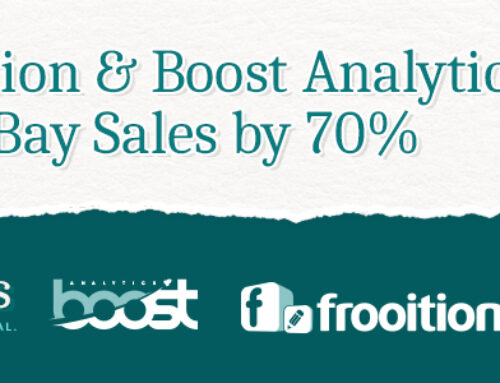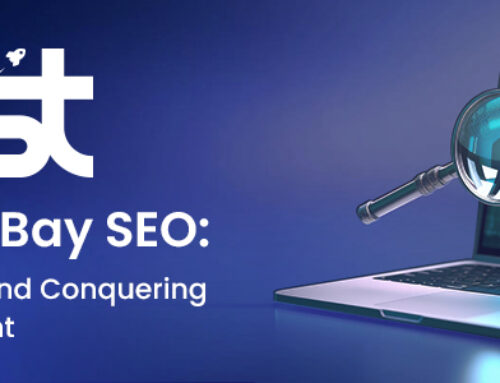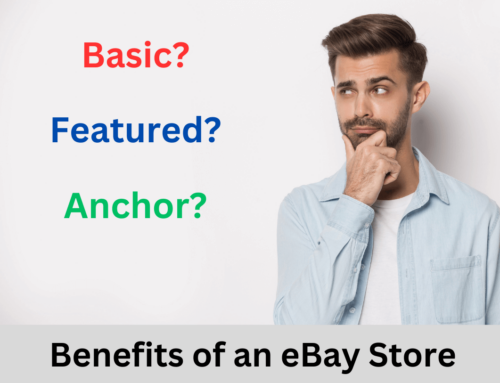
It’s been just over a year since I returned to the world of online marketplaces as the head of marketing for Frooition, an eCommerce design and optimisation agency with its roots firmly bedded in the eBay ecosystem. My first day “back in the office” was spent at the eBay Open event in Manchester.
After more than a decade away, I was keen to see how the marketplace space had evolved and wasn’t disappointed. I met and was re-introduced throughout the event to some of eBay’s most inspirational sellers. I was reminded that there is often a tremendous entrepreneurial story behind the most successful eBay businesses. In many cases, eBay provided an accessible and sustainable route to creating an income that wasn’t available elsewhere.
I was also thoroughly impressed by eBay’s stance on the circular economy. The marketplace had fallen back in love with second-hand, refurbished, and vintage goods. It seemed that eBay had rediscovered what it was that made it great in the first place. Moreover, this was a move that appeared to resonate with Gen Z consumers keen to embrace more environmentally friendly shopping habits.
The New Normal
In the months prior to the eBay Open event, many eBay sellers had ridden the wave of success enjoyed by online retailers during the Covid-19 pandemic lockdowns. It’s also worth remembering the eBay Open event in 2021 was one of the first “real world” events that many delegates had attended in nearly two years. I, for one, was just happy to be out of the house.
Although we were returning to the “new normal,” it was hard not to be optimistic, and much of this optimism was reflected in a post I wrote on ChannelX. Many people felt this post had been written with the benefit of rose-tinted glasses. They might have been right – I am a glass-half-full guy. But I still stand by many of the points I raised that day with the caveat that selling on eBay has its challenges.
Big Changes at eBay
Just a few weeks into the job, I was painfully aware that many people didn’t share the same rosy view as I had picked up at eBay Live. In fact, many people had fallen out of love with eBay. Many sellers had reported that their sales had fallen off a cliff. Others were increasingly angry at eBay’s move into promoted listings, citing them as just another fee increase.
Some of this decline could be attributed to the re-opening of the high street and the end of furlough. However, much of this fall in sales could also be blamed on sellers failing to keep up with eBay listing best practices and everyday business sense.
Despite this negative talk, I was constantly coming into contact with sellers whose experience with eBay was universally positive. As I travelled the country with the eBay Business Roadshow, it was incredible to meet many new and enthusiastic eBay sellers who were enjoying considerable early success on the marketplace. The difference between the sellers who loved and hated eBay was often very much a question of optimisation.
eBay Optimisation Starts With Product Sourcing
Optimisation starts with sourcing the right products at the right price. Just because a product has sold well and returned a decent margin in the past doesn’t mean it will continue to deliver a positive return on investment. In fact, in the world of online marketplaces, where competition is fierce and barriers to entry virtually non-existent, perhaps the worst thing you can do is sit on a specific product range for any length of time. With this in mind, the question that should be at the forefront of any seller’s mind should be – what can I sell next?
Sourcing products is perhaps the most challenging part of any seller’s journey. This explains why many eBay sellers never manage to grow their businesses beyond the side hustle stage. It also highlights the risk many sellers expose themselves to by focusing all their efforts on a limited number of products and suppliers. If, like me, you are old enough to remember how to demise of Woolworths and Entertainment UK Ltd. single-handedly brought down countless media sellers, including major high street chains like Zavvi (formerly Virgin Megastores), you’ll know the risk of keeping all your eggs in one basket.
eBay Listing Best Practices
We’ve documented many eBay listing best practices on this blog over the last 12 months. We all know how the considered use of images and video, detailed item specifics, accurate shipping information, and on-brand design can dramatically improve your products visibility in eBay search. But sometimes, it isn’t easy to take a step back and find the time to fix listings that, rather frustratingly, worked well in the past.
Then there are lesser-known hacks, like removing and re-listing old and slow-selling listings that may damage your other listings’ visibility.
There’s no getting away from the fact that optimising your eBay listings is hard work and, as eBay changes the rules, it’s a job that will never end.
Advantages of a Well Optimised eBay Store
While ensuring your eBay store is fully optimised can be challenging, it’s important to remember that eBay has many advantages over other marketplaces. If you need persuading of this fact, consider the following:
- You own your listings: This means you are in full control of the images and text you display in your listing and, therefore, can actively compete against competitors with poorly optimised listings. Unlike on Amazon, it also means competitors cannot sell directly from your created listing. Because Amazon has just one product page for every item in its product catalogue, competitors can use your product images and descriptions to sell their products, often undercutting your original price and creating a race to the bottom. It’s also essential to remember eBay is not a retailer and unlike Amazon won’t use your data to actively compete against you.
- SEO: An optimised eBay listing is also optimised for Google, helping more people find your listings, even if they are not active eBay users.
- Promotional Tools: eBay offers its sellers a raft of promotional tools including email marketing and social media sharing tools. Sellers using Frooition’s design services also have access to powerful cross-promotional tools to keep buyers on their listings and not be re-directed to their competitors’ listings via eBay search.
- Gated Categories: If you want to start selling toys at Christmas, this isn’t a problem on eBay. The freedom to sell anything at any time isn’t always so easy on Amazon. Where eBay does have gated categories (such as CBD products), the team at Frooition can introduce you to eBay category owners and help smooth the process.
- Promoted Listings: Promoted listings on eBay don’t need an upfront investment in cash. If you have a margin in a product, you can use that margin to fund your promotions on a cost-per-sale (or acquisition) basis. Compare this to paid search on Google, which can completely destroy any profit in a sale within just a few clicks.
Frooition’s eBay listing optimisation reporting tool is a great place to start when considering how you can improve your listing strategy. But sellers should also be aware that optimisation is an ongoing process and really never ends.
Yes, selling on eBay can sometimes be challenging and even frustrating, but it can still be thought of as the perfect store when everything is aligned. My glasses may still be slightly rose-tinted, but I’ve met too many sellers who have told me how eBay has changed their lives for the better to look at the marketplace any other way.
To learn more about how Frooition can help you optimise your eBay selling experience, book a free 15-minute discovery call with one of our eBay experts today.






